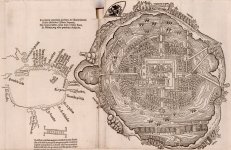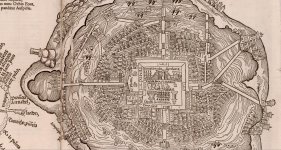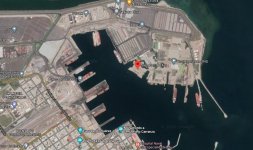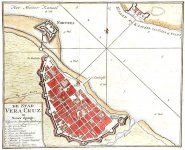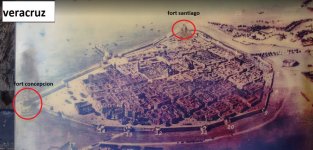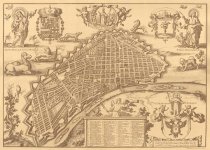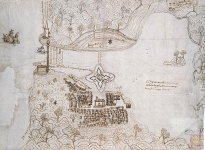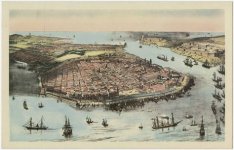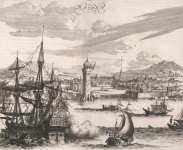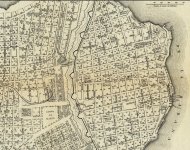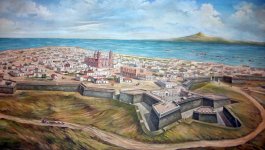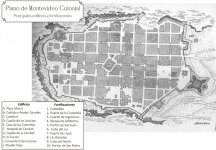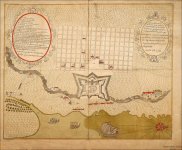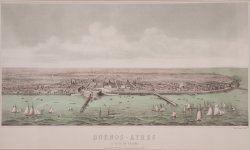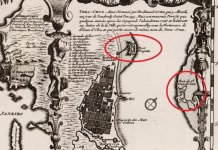Just today that I was looking at images, I saw one about the city of Quinsay and an old theory that I had read a long time ago came to my mind and I will share it because it is very interesting ...
Johannes Schoner (1477-1547) who assured in 1523 that Tenochtitlán, the city conquered by Hernán Cortés two years earlier, was the Chinese metropolis of Quinsay, the “City of Heaven”. This statement was published in writing and on various globes and planispheres produced by him between 1523 and 1533.
Johannes Schóner had access to several testimonies, among them the second Letter of relationship of Hernán Cortés and also the Book of the wonders of the world, the famous Millione, by the Venetian Marco Polo. And of course Schóner was aware of what had been written about Columbus's travels and of those who later marched to those lands located to the west.
HB: The author of this article that I will leave you, tries to give his explanation of how this statement had to be a confusion ....
-In matters of geography, until then nobody had a global vision of the planet.
-Regarding what would be called the New World, especially the Spanish, Portuguese, Italians and English, little by little and groping many times with the participation of the indigenous people, they would get to know the profile of the great continent. It is known that the one who triggered the process of the meeting, Christopher Columbus, persisted in the persuasion of having reached the extremes of Asia.
-The world maps, planispheres and terrestrial spheres that were produced later during the first half of the 16th century and subsequent years, reflect the uncertainties. The one who was the pilot of the Santa María, Juan de la Cosa, drew a large map in 1500 in which, beyond the Antillean islands, a landmass appears that goes from the extreme north of the world to the ends of the south. What was there raised great questions.
It is exciting to approach the maps of cartographers such as Alberto Cantino (1502), Nicolás Caverio (1502), Francisco Roselli (1506), Giovani Matheo Contarini (1506) and check how the uncertainties that sometimes translate into daring hypotheses persist. A canon of the city of San Dié in Lorraine, Martin Waldseemü-lIer, published in 1507 a pamphlet entitled Introduction to Cosmography, precisely to the work of Claudio Ptolemy. In this Introduction, inspired by the writings of Americo Vespucio about a Mundus Novus, and on the world map of Nicolás Caverio, he presented a delineation of the lands that were becoming known as a "quarter of the world." The southern one gave it the name of America there to honor the memory of Vespucci.
-What was elaborated by Waldseemüller was far from putting an end to the uncertainties and discrepancies.
-In fact, the unknown, as regards a possible terrestrial link between Asia and America in the extreme northwest of it.
HB: And so, you mention an endless number of cartographers.
"These new lands (those of the western hemisphere) belong to the continent of Upper India, which is a part of Asia ..." (Schoner c.1523, 10.)
In this interpretation of Magellan's trip, Schoner followed the opinion of Maximiliano Transilvano, a secretary of Carlos V, expressed in a letter written in Valladolid in the late 1522. Addressing Transilvano to the cardinal of Salzburg, he reported in it what he knew about the recent trip of Magellan, hinting that the union of the so-called New World with Asia could be concluded from him.
1671 Ogilby, John, 1600-1676
Schoner identifies Mexico-Tenochtitlan with Quinsay, the "City of Heaven." Let's see what he wrote about it.
Mexico-Temistitan in Upper India or, rather, in Cathay, China.
Without hesitation on this point, Schoner expresses this in his Opusculum Geographicum: "Following a long circuit, towards the west, starting from Spain, there is a land called Mexico and Themis-titan in Upper India, which the ancients called Quinsay, that is to say the City of Heaven ". (Schoner, c. 1523, 12.)
To find out the location that was attributed to Quinsay we can go to the world map of Henricus Martellus, the aborado in Nuremberg around 1490. In it, the image of the world of Ptolemy remains, although already highly enriched.
Quinsay appears in the eastern end of Asia, as one of the two largest cities on Earth and precisely built on a large lagoon. As much in the terrestrial globe of 1523, as in another one of his of 1533, Schoner delineates such a union of America with Asia. Schoner, a native of Nuremberg, where he worked, knew that world map. In addition, as a certain thing it can be affirmed that he had read at least the part of Marco Polo's book in which he speaks of Quinsay, explaining that it was the "City of Heaven". In describing it, he points out that it also went by the name Hang-Tcheou, which lasts to the present. Marco Polo refers that Hang-Tcheou, by another name Quinsay, was the capital of Manzio southern China. In describing its splendor, among other things, he comments that:
It is so big that it has a hundred miles per circuit and has twelve thousand stone bridges ... Because you have to know that this city is all built on the water that surrounds it everywhere. It is convenient, therefore, that there are so many bridges.
There are splendid palaces and rich houses belonging to the nobles of the city. Many idols are also kept, and numerous monasteries ...
There are more than three thousand bathrooms in it ... Merchants arrive there loaded with various products ... Its inhabitants are excellent men of war ... When a child is born to them They put in writing the day and time of their birth and under what sign it occurred. When [later] someone wants to travel, he consults an astrologer to see if he should undertake the trip or not ...
People burn the bodies of those who die ... The palace of the supreme ruler of Manzi is the largest in the world ... Inside there are very beautiful gardens ... The city receives immense tributes ..., forty times five thousand six hundred gold pesos ... (Marco Polo 1988, 82-90.)
Regarding what Hernán Cortés expressed about Mexico-Tenochtitlan in his second Letter of Relationship, dated October 30, 1520.
This letter was published very soon in Spain. It appeared in Seville. in the printing house of Jacobo Cromberger, in November 1522.
It being possible that Schüner read in said Spanish edition the description of
The metropolis that Cortés conquered, it is also possible to think that he had access to the printing of it in German, which saw the light in March 1524 and precisely in Nuremberg, where Schoner worked. This last one moves to affirm that the Treaty where he identified the Mexican metropolis with the Chinese one, was written and printed not in 1523, but about a couple of years later.
Let us now look at Cortés de México-Tenochtitlan's description without losing sight of the transcription that I have made of what Marco Polo expressed about Quinsay.
HB:
- As you will see, the work of Johannes Schoner compares what was said by Marco Polo de Quinsay and what was said by Cortes de Temix-Titan, which by the way sound very similar.
- It also touches on the theme of America united to the Asian continent.
- Not exactly Cathay was referring to the Chinese I think, being this on occasions above China in ancient maps, perhaps it was the Cathay (Tartaros) that dominated China in the form of the Qing dynasty?
- I know that you have already touched on many of these topics but I did not see something like what Johannes Schoner proposed and I knew it was a good opportunity to know what you think of all this, greetings!
Search in:
México Tenochtitlan: metrópoli de la China


